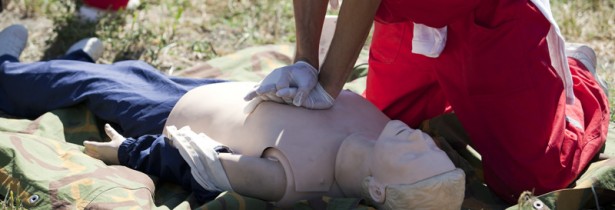Between 2010-11 and 2011-12 Australian sea exports increased by 6.1% to $236.2 million, with the tonnage of these exports increasing by 10.4% to 973.2 million tonnes. Imports valued at $182.2 billion and weighing 94.9 million tonnes also increased by 13.3% in the same time frame. These increases have important implications for specialist transport and work related safety in Australian port terminals.
A freight safety report published by the International Transport Workers Federation (ITF) found that the main threats to work related safety were associated with heavy machinery and the massive loads that are moved around the docking areas. Increased risks included inadequate workplace infrastructure and insufficient container information.
The two areas of worker related safety of concern in ports are therefore due to the environment and to the unpredictable nature of container freight.
Environmental safety concerns
These are only a few of the injuries, some resulting in death, that highlight the emotional topic of worker safety in ports both within Australia and overseas.
- On November 12, 2013 a worker was seriously injured when he was trapped between a forklift and a scissor lift at BAE Systems Shipyard in Western Australia.
- In August 2013, a lack of training in safety procedures caused a protest at Station Pier in Port Melbourne blocking the movement of freight into and out of the dock.
- In 2012, a stevedore died at Newcastle, NSW due to the fall of a break-bulk cargo of unstable ingot packs which crushed the worker. In the previous 2 and a half years there had been 5 other instances of unstable ingot cargoes falling – but without worker injuries.
- In 2010 a stevedore was crushed to death between 2 containers as they were being loaded aboard ship at the Port Botany terminal, NSW. The death was attributable to the worker placing himself in a dangerous position just as a twistlock failed.
- In 2010, a 2.5 tonne steel drum fell as it was being lifted at Appleton Dock, Melbourne killing a port employee. The transport company was fined $300,000.
The Australian Transport and Safety Bureau states that complacency about safety is one of the main causes of onsite accidents or fatalities in ports.
In April 2013, the Maritime Union of Australia (MUA) submitted a proposal to Safe Work Australia for a Stevedoring Code of Practice. To support their submission the MUA stated that the rates of death and injury in port terminals had reached crisis levels in Australia with a rate of 2.8 deaths per 100,000 workers during 2010-11.
Given the death and injury rate within Australia, the MUA would prefer statutory safety regulations however, given the unwillingness of the government and employers to support any regulations – a Code of Practice was essential to worker safety.
Freight safety concerns
A 28 tonne container that was severely overloaded fell 12 metres and narrowly missed 2 workers at Darwin Port on February 25th 2011. The container was listed as weighing 4 tonnes but the true weight was 28 tonnes – which exceeded the load limit of the lifting crane causing it to break free and crash to the dock.
An overloaded forklift fell forwards after its container load shifted in a container yard in west Melbourne on May 9th, 2011.
The International Maritime Organisation (IMO) in an effort to combat these and other problems intends to amend the Safety at Sea Convention (SOLAS). Specific to the weight of containers – the problem is that there is no universal agreement on weighing containers and the decision made by the IMO appears set to adopt a compromise which allows governments to choose how and when and by whom the containers are weighed prior to loading.
The ITF president Paddy Crumlin has stated that it should be a legal requirement that containers are weighed accurately and he does not believe that the proposed SOLAS amendments will enforce this requirement in a satisfactory framework. The undeclared and inaccurate weights of containers is an ongoing problem – and many more container incidents have been reported by the IMO.
In conclusion, the number of fatalities and injuries occurring in our ports is detrimental to the Australian import and export industry. It therefore behoves all specialist transport businesses to stand behind our Australian wharf workers and support a regime of both safety and transparency within our ports.
Author Bio
This article was submitted by AllWord Logistics, an international freight forwarding company based in Melbourne, Australia who provide efficient and effective sea and air freight services.
